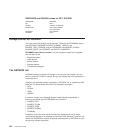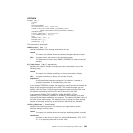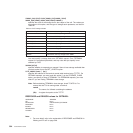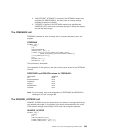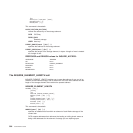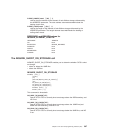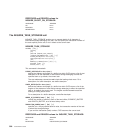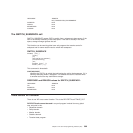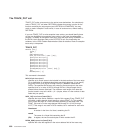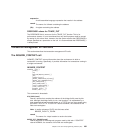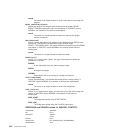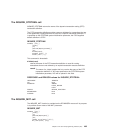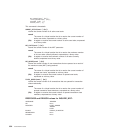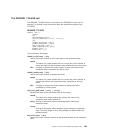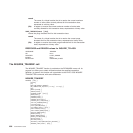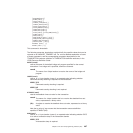The TRACE_PUT call
TRACE_PUT writes a trace entry to the active trace destinations. You should only
make a TRACE_PUT call when UEPTRON indicates that tracing is active for the
function containing the exit program (see UEPTRON in DFHUEPAR). You may
prefer to make “exception” trace entries, in case of serious errors, without testing
UEPTRON.
If you use TRACE_PUT to write exception trace entries, you should identify these
so they are highlighted as exception trace entries by the trace formatting utility
program. To identify an exception trace entry, enter the literal string ‘USEREXC’ in
the DATA1 block descriptor field on the DFHTRPTX call. See Interpreting the
evidence, in the CICS Problem Determination Guide for details of how an exception
trace entry is interpreted.
TRACE_PUT
DFHTRPTX [CALL,]
[CLEAR,]
[IN,
FUNCTION(TRACE_PUT),
POINT_ID(literalconst | name2 | (Rn)),
[DATA1(block-descriptor),]
[DATA2(block-descriptor),]
[DATA3(block-descriptor),]
[DATA4(block-descriptor),]
[DATA5(block-descriptor),]
[DATA6(block-descriptor),]
[DATA7(block-descriptor),]
[RETURN_ADDR(expression | name4 | (Ra)),]]
[OUT,
RESPONSE(name1 | *)]
This command is threadsafe.
DATAn(block-descriptor)
specifies up to seven areas to be included in the data section of the trace entry.
For a description of valid block-descriptors, see block-descriptor. If you specify
any given DATAn, then DATA1 through DATA(n-1) must be coded before
DATAn. The specified DATA items are printed in the trace output in the order
specified, that is, in order of DATA1 through DATAn. A 2-byte length field is
printed before the data field itself. The maximum total length of the data that
can be traced in one call is 4040 – (2 * n) bytes, where n is the number of data
fields that you specify.
POINT_ID(literalconst|name2|(Rn))
specifies the trace entries made as a result of this request. Every TRACE_PUT
call within a calling domain should specify a unique POINT_ID. This enables
you to locate the origin of a trace call when examining a formatted trace. The
POINT_IDs must be in the range decimal 256 through 511 (X'100' through
X'1FF'). This range is not used in CICS modules, but is reserved for user exits.
literalconst
A number in the form of a literal, containing the ID
name2
The name of a 2-byte field containing the ID
(Rn) A register, the two low-order bytes of which contain the ID.
RETURN_ADDR(expression|name4|(Ra))
specifies the value that appears in the return address field of the trace entry.
400 Customization Guide



